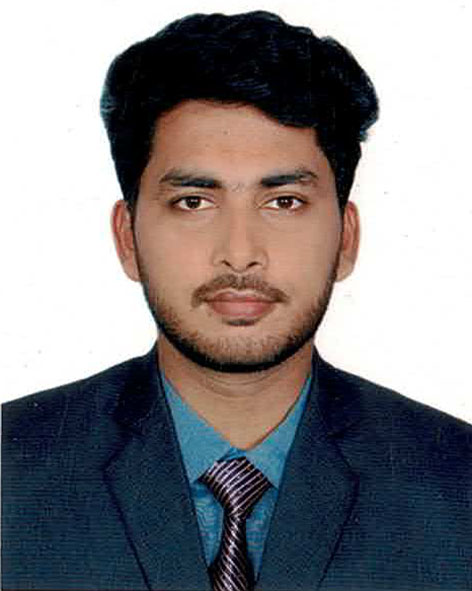Health Sciences articles list
Muslim heritage in medicine: a concise review on greco-arabic contribution
The presented review was an attempt to share the contribution of Greco Arabic Muslim scientists in the field of medicine. In this regard, al-Andalusi, al-Antaki, al-Baghdadi, al-Jawhari, al-Kindi, al-Nafis, alRazi, al-Tabari, al-Zahrawi, Ibn Abdallah Ibn Idris al Qurtubi, Ibn al-Jazzar, Ibn al-Baitar, Ibn alHaitham, Ibn El-Quff, Ibn Haiyan, Ibn Sina, Ibn Wahshiyyah and Ibn Zuhr with their contribution has discussed.
Urolithiasis management and treatment: exploring historical vistas of greco-arabic contribution
The purpose of the presenting review was to share the medicinal and surgical contribution of Greco-Arabic Muslim scientists in diagnosis, surgery and natural medicines for managing and treating urolithiasis. The contribution of Al-Antaki, Al-Baghdadi, Al-Baitar, Al-Bokhari, Al-Razi, Al-Zahrawi, Ibn Sina, and Ibn Zuhr was highlighted. The data compilation was preliminary, and much more efforts are still needed to restore the missing continuity in the history of medicine.
Antiurolithiatic plants: formulations used in different countries and cultures
: About 12% of the world population is affected by different forms of urolithiasis, the recurrence rate of which is 47-60% in females and 70-80% in males. According to WHO, 75% of people rely on traditional medicines to prevent and cure different ailments. Similarly, the majority of the world population uses several plants to treat problems related to the urinary tract system, of which urolithiasis is the primary cause. The review aims to collect data on the plants used in different parts of the world and cultures against urolithiasis, including their parts, mode of preparation, dosage, and administration. A literature review was conducted for traditionally used antiurolithiatic plants. The articles mentioning plant, parts, mode of preparation, dose and route of administration were selected. This information was extracted to compose Mono and Polyherbal antiurolithiatic formulations used in Appalachia (a region in the Eastern United States), Canada, India, Iran, Israel, Italy, Jordan, Latin America, Pakistan, Turkey and Yemen. The review provides essential data about plants used as antiurolithiatic in different parts of the world. The information is not only useful for ordinary people but also for the scientific community to carry out further phytochemical, pharmacological and toxicological studies for discovering new, effective, safer molecules against urolithiasis.
Phaseolus lunatus linn: botany, medicinal uses, phytochemistry and pharmacology
The present review shares an updated data on the botany, distribution, traditional medicinal uses, phytochemistry and pharmacology of Phaseolus lunatus L. All provided information was obtained through Google Scholar, Pubmed, Sci Finder, Scirus, Web of Science and library search.
Total, insoluble and soluble oxalate contents of three pakistani legume flours
Oxalate is widely distributed in plant foods as potassium, sodium and ammonium oxalates (water-soluble form) and as insoluble calcium oxalates. Oxalate forms strong chelates with dietary calcium, thus rendering the complex unavailable for absorption and assimilation. It precipitates as insoluble salts accumulating in the renal glomeruli and contributes to the development of renal disorders. The seed flours of Macrotyloma uniflorum (Lam.) Verdc., Phaseolus lunatus Linn., and Phaseolus vulgaris Linn. were investigated for their total, soluble and insoluble oxalate contents by HPLC. The total oxalate content of M. uniflorum, P. lunatus and P. vulgaris was 1.24, 1.77 and 1.71 mg/ g, respectively. The %age of soluble oxalate were M. uniflorum (19.50), P. lunatus (15.08) and P. vulgaris (15.88). Only soluble oxalate is responsible for oxalate absorption (bioavailability) and its excretion. Overall, the total oxalate content is high in legume flour of M. uniflorum, P. lunatus, and P. vulgaris, but the soluble oxalates are very low. Therefore, all these three legumes don't have the adverse effects of oxalate on minerals bioavailability and risk of urolithiasis.
A study on the utilization and health services provision by community clinics of jashore, bangladesh
Background: As Bangladesh has gained the reputation of improving the health sectors, much health related sites still require improvements. Community clinic services (CCS) may contribute to this sector with its foremost importance. So this study was conducted to investigate the utilization and health services provision by community clinics (CCs) in rural area. Methods: A descriptive longitudinal study was conducted among three community clinics of Jashore and a structured questionnaire was developed on which most of the questions were developed to find out the contributions of these community clinics. Here for data analysis we used SPSS version 25.0 software. Results: Here we analyzed health service related data from three randomly selected community clinics (CCs). We found an average of 15 patients got antenatal care every month by the Komlapur CC throughout the year. About 140 patients received health services per month from Dogachiya CC. About 634 children were benefited by Saziyali CC throughout the year. By this study we came to know that average 67-75 patients were provided iron supplementations each month by Saziyali CC. All of the CCs had active referral system and online reporting system. Conclusion: From our study we came to know that majority % of rural people are now dependent on community health care services. But most of the community clinics have many limitations regarding infrastructure, training, medicines, financial etc. So the government should take necessary steps regarding this.
Assessment of dietary habits, nutritional status and common health complications of older people living in rural areas of bangladesh
Background: Old age is one of the vulnerable and prone stages in terms of health status. So this study aimed to assess the nutritional status and common health complications of older people. Methods: Simplified Nutritional Appetite Questionnaire (SNAQ), Anthropometric measurements, Diet History Method, and Mini Nutritional Assessment (MNA) tools were used to measure the nutritional status. Data were analyzed by using Statistical Package for Social Science (SPSS) version 16. Results: Out of the total 320 elderly participants the mean SD value for the age of male and female was 67.25 6.5 and 67.32 7.7 years respectively. According to BMI classification, it was noticed that with advancing age the percentage of underweight was also increased such as for 60–75 years old age group the underweight percentage was 30.0% where for 76 to 85 and >85 years old age group the underweight percentage was 45.0% and 60.0% respectively. According to the MNA score, 97 elderly respondents were malnourished and a total of 172 respondents had SNAQ scores below 14. This study found a statistically significant (P < 0.05) correlations among various health complications with nutritional status according to MNA score. In addition 56.6% (OR ¼ 1.24, 95% CI ¼ .799–1.939), 63.8% (OR ¼ 1.18, 95% CI ¼ .745–1.857) and 64.7% (OR ¼ 1.14, 95% CI ¼ .720–1.804) respondents had diabetes mellitus, hypertension and cardiovascular disease respectively. The risk of musculoskeletal pain (OR ¼ 1.073, 95% CI ¼ .684–1.681), bedsore (OR ¼ 1.884, 95% CI ¼ .903–3.934) and decreased sense of thirst (OR ¼ 1.278, 95% CI ¼ .821–1.991) were higher among females than males. A little number of the elderly used to take milk, meat, and fish daily. Conclusion: During this cross-sectional study, significant correlations among nutritional changes with health complications were determined. To prevent malnutrition among the elderly a proper health policy as well as periodical nutritional screening should be conducted
Most Popular Category
- Pharmacy (258)
- Education and social science (216)
- Pharmacology (211)
- Pharmacognosy (173)
- Business management (147)
- Pharmacology and toxicology (132)
- Education and training (126)
- Pharmaceutical sciences (126)
- Research (121)
- Medicine (111)
- Management (98)
- Health Science (96)
- Computer Science (87)
- Human resource management (83)
- Biological Sciences (83)
- Computer Science Applications (80)
- Engineering (77)
- Accounting and finance (73)
- Information technology (67)
- Public health (60)
 Dr. Salman Ahmed
Dr. Salman Ahmed  Arafat Hassan Razon
Arafat Hassan Razon